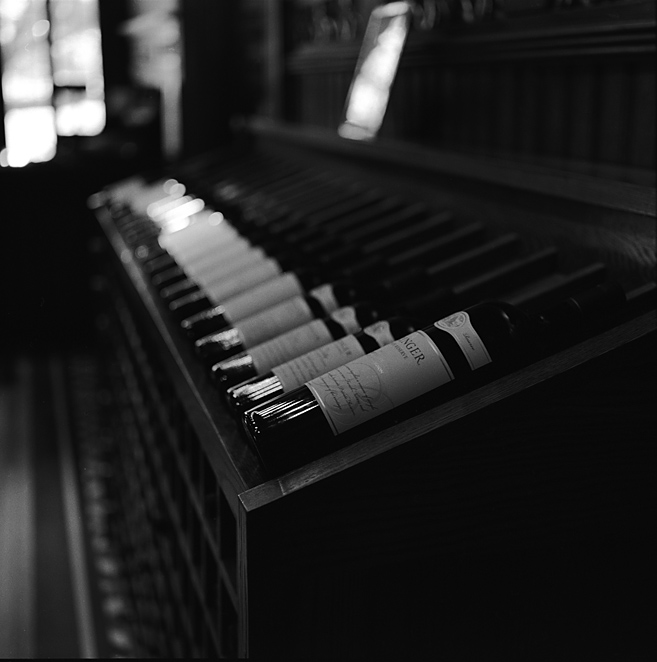hi Asher,
I also enjoy photographing classical musicians in rehearsal and performance (if allowed). I agree that the clothing and lighting make for difficult metering. The DSLR's ability to crank up the iso is really helpful in these shots. You photos wonderful and I see that you often use iso 2000 or higher so I don't know if using film will yield less grainy results, even in MF. Also with the Bessa you will not be able to focus closer than about 3 feet (as in your oboe picture).
I think the shutter of the Bessa III is one of quietest that I've heard, even more so than the Leicas. It would work great for a classical music setting BUT the shutter sound will not be the problem. It's the ratcheted film advanced that will be heard and that's even worse because even though it's not terribly loud, advancing the film takes a few turns and that "zzzzzzit - zzzzzzit - zzzzzzit" sound lasts longer than a little "click".
The DSLR's are very useful for your shooting. iso 4000 looks pretty darn good! You're already using the high end of the DSLR cameras and seem to be doing a fine job. I would keep trying to improve your technique in getting the exposure right and that way you reduce the noise problem. If possible it might be best to get handheld meter reading of the stage before hand, use a grey card to make a custom white balance, and shoot in manual mode. If you're shooting Raw than you can always fix the WB later but I like to get the WB right at the time. Sometime it's difficult to do this because the venue will not light the stage until the concert begins. But if the WB is really off you can always convert to B&W - always a good look for classical performances 😉. In a classical music venue the lighting will stay consistent (unlike a rock concert) so once you set the exposure manually you can pretty much forget about it and just shoot. But the great thing about digital is the ability to immediately see your results and fix your exposure accordingly. Check your histogram.
If you really want MF and a quiet shutter (film advance), then maybe the Mamiya 6 or 7/7II is the way to go. You can also change lenses and all of them are outstanding, especially the wide angle lenses. If you want a quiet 645 camera then the Bronica RF645 is also scary quiet. Good luck!



